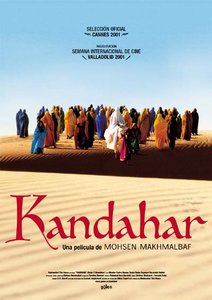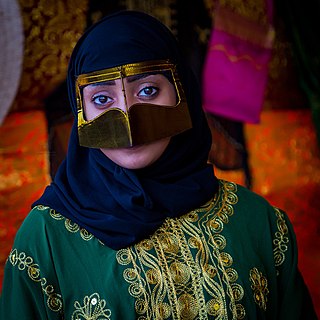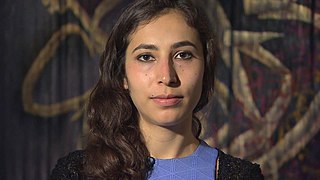Related Research Articles

Cross-dressing is the act of wearing clothes traditionally or stereotypically associated with a different gender. From as early as pre-modern history, cross-dressing has been practiced in order to disguise, comfort, entertain, and express oneself.

A burqa or a burka is an enveloping outer garment worn by some Muslim women which fully covers the body and the face. Also known as a chadaree or chaadar in Afghanistan, or a paranja in Central Asia, the Arab version of the burqa is called the boshiya and is usually black. The term burqa is sometimes conflated with the niqāb even though, in more precise usage, the niqab is a face veil that leaves the eyes uncovered, while a burqa covers the entire body from the top of the head to the ground, with a mesh screen which only allows the wearer to see in front of her.

Gillian Wearing CBE, RA is an English conceptual artist, one of the Young British Artists, and winner of the 1997 Turner Prize. In 2007 Wearing was elected as lifetime member of the Royal Academy of Arts in London. Her statue of the suffragist Millicent Fawcett, popularly known as "Hanging out the washing", stands in London's Parliament Square.

Louise Abbéma was a French painter, sculptor, and designer of the Belle Époque.

Alice Neel was an American visual artist. Recognized for her paintings of friends, family, lovers, poets, artists, and strangers, Neel is considered one of the greatest American portraitists of the 20th century. Her career spanned from the 1920s to 1980s.

John Patrick Byrne was a Scottish playwright, screenwriter, artist and designer. He wrote The Slab Boys Trilogy, plays which explore working-class life in Scotland, and the TV dramas Tutti Frutti and Your Cheatin' Heart. Byrne was also a painter, printmaker and scenic designer.

A niqāb or niqaab, also known as a ruband, is a long garment worn by some Muslim women in order to cover their entire body and face, excluding their eyes. It is an interpretation in Islam of the concept of hijab, and is worn in public and in all other places where a woman may encounter non-mahram men. Most prevalent in the Arabian Peninsula, the niqab is a controversial clothing item in many parts of the world, including in some Muslim-majority countries.

Kandahar is a 2001 Iranian film directed by Mohsen Makhmalbaf, set in Afghanistan during the rule of the Taliban. Its original Afghan title is Safar-e Ghandehar, which means "Journey to Kandahar", and it is alternatively known as The Sun Behind the Moon. The film is based on a partly true, partly fictionalized story of Nafas, a successful Afghan-Canadian woman played by Nelofer Pazira.

Hammasa Kohistani is a British model, charity worker and beauty pageant titleholder. She is of Afghan descent best known for winning the Miss England contest in 2005. She was notably the first beauty contestant of Asian descent as well as the first Muslim to be crowned as Miss England.

Yolanda Margarita López was an American painter, printmaker, educator, and film producer. She was known for her Chicana feminist works focusing on the experiences of Mexican-American women, often challenging the ethnic stereotypes associated with them. Lopez was recognized for her series of paintings which re-imagined the image of the Virgen de Guadalupe. Her work is held in several public collections including the Smithsonian American Art Museum, the San Francisco Museum of Modern Art, and the Los Angeles County Museum of Art.

Clothing in Afghanistan consists of the traditional style of clothing worn in Afghanistan. The various cultural exchanges in the nation's history have influenced the styles and flavors of contemporary Afghan designs. The national dress is the fusion of different ethnic groups in Afghanistan. The styles can be subdivided into the various ethnicities with unique elements for each. Traditional dresses for both men and women tend to cover the whole body, with trousers gathered at the waist, a loose shirt or dress, and some form of head covering.

Battoulah, also called Gulf Burqah, is a metallic-looking fashion mask traditionally worn by Khaleeji Arab and Bandari Persian Muslim women in the area around the Persian Gulf.

Various styles of head coverings, most notably the khimar, hijab, chador, niqab, paranja, yashmak, tudong, shayla, safseri, carşaf, haik, dupatta, boshiya and burqa, are worn by Muslim women around the world, where the practice varies from mandatory to optional or restricted in different majority Muslim and non-Muslim countries.

Burka Avenger is a Pakistani animated television series created, directed and produced by Haroon.

Malina Suliman is an Afghan graffiti artist, metalworker and painter. She was born in Kabul. As a child, she and her family were forced to flee her home province to live in Kandahar, Afghanistan. Her work is considered to challenge traditional Muslim culture like the burqa. According to Suliman, "The burqa is a way of controlling, but in the name of respect. Every culture or religion gives a different name for the burqa. It is honor, culture, and religion. Really, it just controls the woman and keeps her inside." Malina's work has gained the attention of the Taliban and traditional Muslims, resulting in having received threats from the Taliban towards Suliman and her family. The artist was subject to physical threats, rocks have been thrown at her as she conducts her work.

Shamsia Hassani is an Afghani street artist, a fine arts lecturer, and the associate professor of Drawing and Anatomy Drawing at the Kabul University. She has popularized "street art" in the streets of Kabul and has exhibited her art in several countries including India, Iran, Germany, United States of America, Switzerland, Vietnam, Norway, Denmark, Turkey, Italy, Canada, and in diplomatic missions in Kabul. Hassani paints graffiti in Kabul to bring awareness to the war years. In 2014, Hassani was named one of FP's top 100 global thinkers. She was recognized as one of the BBC's 100 women of 2021.
Amy Sherald is an American painter. She works mostly as a portraitist depicting African Americans in everyday settings. Her style is simplified realism, involving staged photographs of her subjects. Since 2012, her work has used grisaille to portray skin tones, a choice she describes as intended to challenge conventions about skin color and race.

Rana Abdelhamid is an American political candidate and activist based in Queens, New York. Abdelhamid is also the founder of Hijabis of New York and the Women's Initiative for Self Empowerment.

Behnaz Farahi is an Iranian-born American interdisciplinary designer and educator whose work melds architecture, fashion, interaction design, computational design, wearable technology and the human body. Currently, she is an Assistant Professor at the MIT Media Lab. Her designs often explore the possibilities of human interaction with the environment and how technology can facilitate this interplay. Her work engages with the human body's relationship to its surroundings and how wearable technology can respond to, or be influenced by stimuli such as human emotions or environmental factors. Leveraging technology and art, Farahi's works are commentaries on power dynamics, society, and identity, frequently drawing inspiration from her cultural background and Western theories and practices, underpinned by theoretical concepts including socio-political feminist theory and anthropology.
Sasha Gordon is an American figurative painter. Her self-portraits, executed with oil paints, typically depict her nude body in a variety of strange situations. Her work grapples with misogyny, racism, and homophobia. Vogue described Gordon's paintings as having a “secret alchemy that sets them off from the current avalanche of figurative art rooted in identity politics".
References
- ↑ Rogers, Fiona; Houghton, Max (21 August 2017). "Behnaz Babazadeh's candy burqas challenge cultural stereotypes". CNN . Archived from the original on 5 August 2022. Retrieved 8 December 2021.
- ↑ "Discussing racism and identity through ART". The News International . 3 July 2020. Archived from the original on 1 February 2024. Retrieved 8 December 2021.
- ↑ Kail, Ellyn (1 March 2016). "Artist Creates Self-Portraits Wearing Burqas Made of Candy". Feature Shoot. Archived from the original on 24 July 2024. Retrieved 8 December 2021.
- ↑ "Behnaz Babazadeh's LinkedIn profile" . Retrieved 8 December 2021.
- ↑ Parks, Tynisha (6 March 2021). "Inspiring Women: On Teamwork & Wellness". Eleven by Venus Williams. Archived from the original on 9 December 2023. Retrieved 8 December 2021.
- ↑ Harewood, Gia (5 December 2015). "Behnaz Babazadeh: The Bitter Sweetness of Reinventing Burqas". Of Note Magazine. Archived from the original on 3 October 2023. Retrieved 8 December 2021.
- ↑ Sotire, Timi (1 December 2019). "Afghan-American Artist Behnaz Babazadeh Evokes New Ways Of Viewing The Burka". Reform the Funk. Archived from the original on 10 December 2022. Retrieved 8 December 2021.